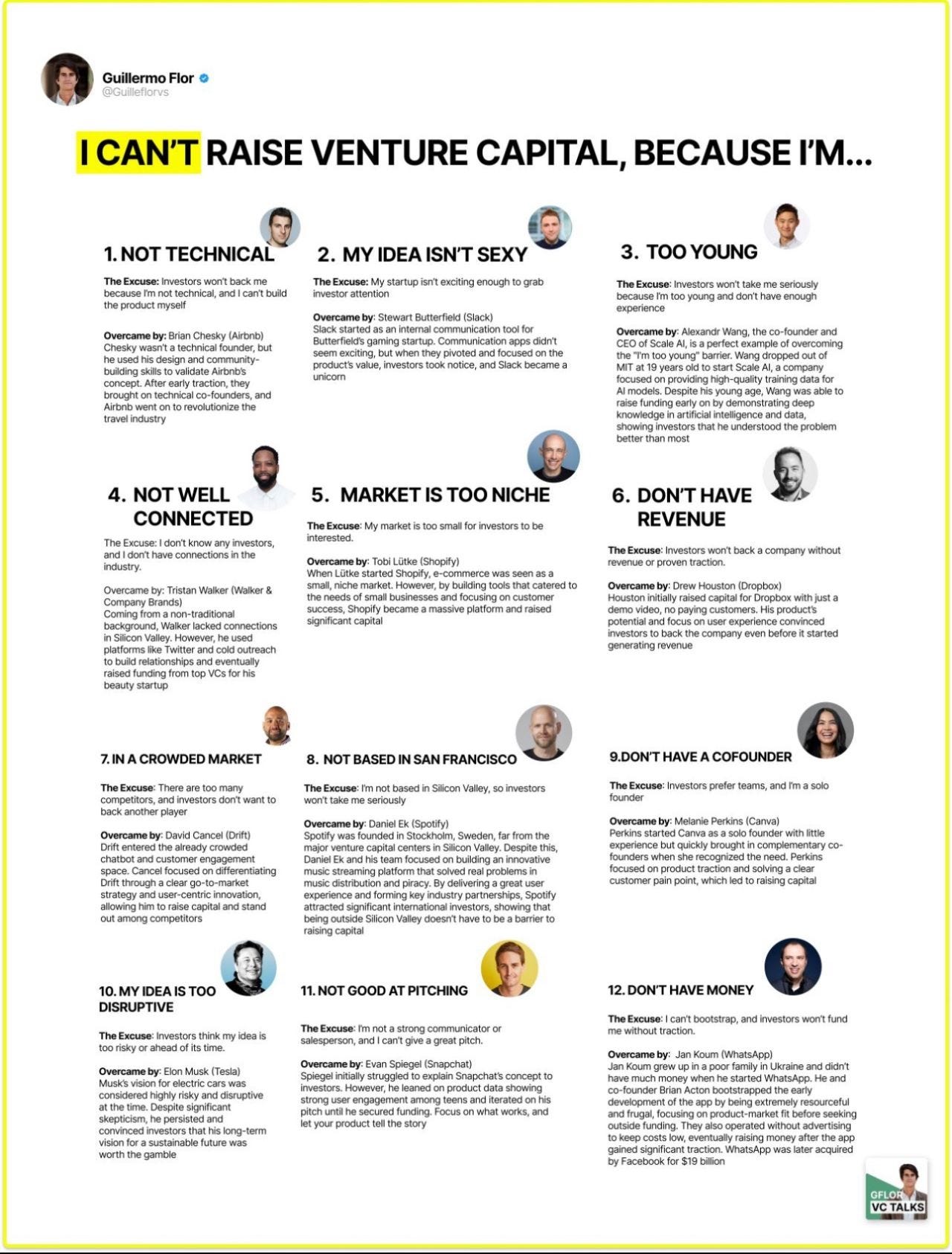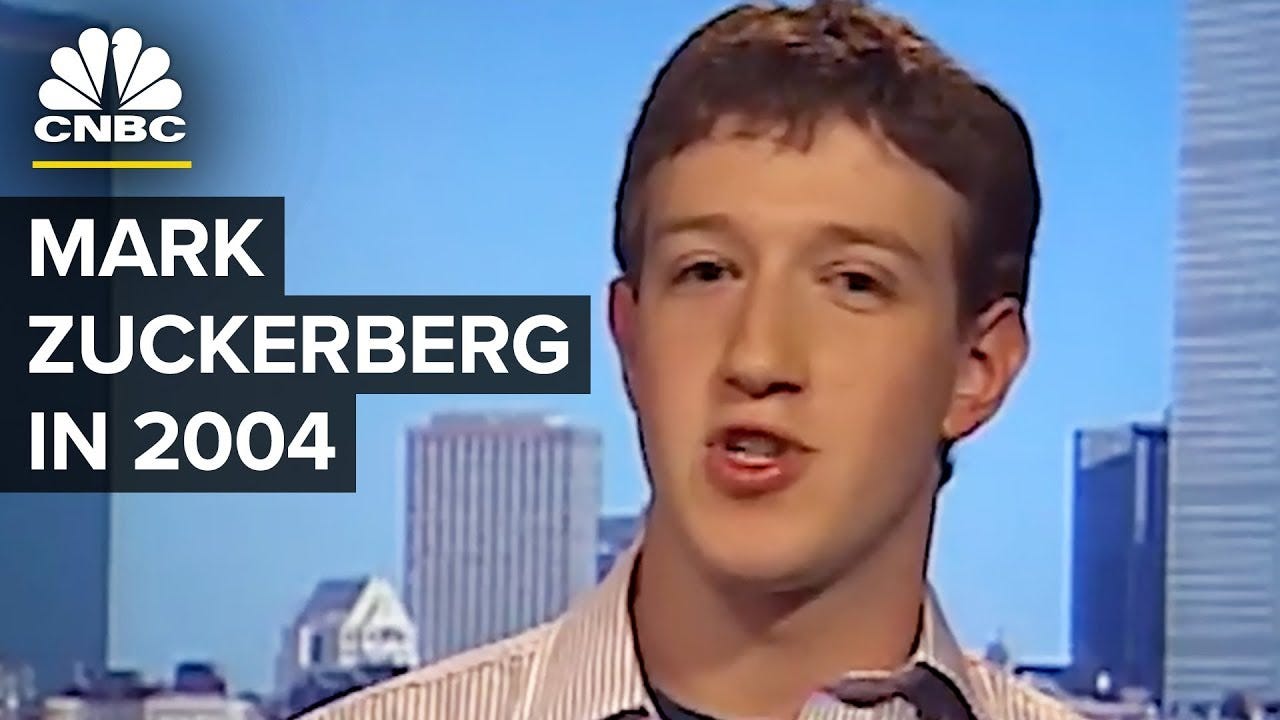Why VCs Say 'No' to Seed Rounds—And How 10 B2B SaaS Founders Turned Rejection into Success
Hey everybody welcome back to the Product Market Fit Newsletter 🚀
My name is Guillermo Flor and I write this weekly newsletter to help founders, growth professionals and product people to grow & fund their companies.
On this article I’m going to talk about the main problems founders encounter when trying to raise a round and how best entrepreneurs solve them as well as how it looks form the investor POV.
But, before going for it, hit play and enjoy these beats
So, in today newsletter I’m going to discuss two things that I find so relevant for founders which are:
Self limiting beliefs that prevent founders from raising capital (and how to overcome them)
PREMIUM: Why VCs Say 'No' to Seed Rounds—And How 10 B2B SaaS Founders Turned Rejection into Success
Enjoy 🤙
There’s isn’t suficcient talk about how building a successful startup is more about overcoming constant obstacles than anything else.
And the main difference between the successful founders and the ones that fail is that the first ones learn to take every no as a problem to solve and the sencond ones allow a no at some point to kill their startup.
With fundraising is the same, and I see some many founders think…
I Can't Raise Venture Capital Because I'm...
1. No Technical Background
Problem: Investors may prefer technical founders who can oversee product development.
Solution: Highlight your strengths (e.g., design, business strategy) and build a technical team.
Example: Brian Chesky of Airbnb, a designer, collaborated with tech experts to grow Airbnb.
2. Unexciting Idea
Problem: Investors are drawn to trendy ideas, so a “boring” concept might struggle to attract attention.
Solution: Show traction and customer need.
Example: Stewart Butterfield’s Slack, initially a simple communication tool, became a leader by proving its value in a crowded space.
3. Too Young or Inexperienced
Problem: Youth and inexperience can lead to doubts about leadership capabilities.
Solution: Demonstrate passion and seek mentors.
Example: Mark Zuckerberg focused on user growth and adapted quickly, convincing investors to back Facebook.
4. Limited Network
Problem: A small network can limit investor connections.
Solution: Network actively through events and social media.
Example: Tristan Walker leveraged social media to connect with top VCs.
5. Niche Market
Problem: Small markets may seem less attractive due to limited growth potential.
Solution: Show the potential for growth or expansion.
Example: Tobi Lütke’s Shopify, originally for small businesses, expanded into a global e-commerce giant.
6. No Revenue
Problem: Pre-revenue startups can seem risky without validation.
Solution: Showcase user engagement or waitlists.
Example: Drew Houston used a demo video for Dropbox to secure funding pre-revenue.
7. Crowded Market
Problem: Competing in a saturated market may concern investors about differentiation.
Solution: Emphasize your unique value proposition.
Example: David Cancel’s Drift stood out by focusing on conversational marketing.
8. Location Outside Major Tech Hubs
Problem: Investors might prefer startups in tech hubs for proximity.
Solution: Highlight location benefits like lower costs.
Example: Ben Chestnut grew Mailchimp from Atlanta by focusing on customer needs.
9. Solo Founder
Problem: Investors prefer teams over solo founders for diverse expertise.
Solution: Bring on advisors or key hires.
Example: Melanie Perkins added co-founders to Canva, strengthening her team and raising capital.
10. Disruptive Idea
Problem: Highly disruptive ideas can seem risky due to industry challenges.
Solution: Outline clear implementation steps and risk mitigation.
Example: Elon Musk’s Tesla attracted investors by proving demand for electric vehicles.
11. Lack of Business Experience
Problem: Investors might doubt your ability to commercialize the product.
Solution: Focus on product-market fit and surround yourself with skilled business professionals.
Example: Patrick Collison’s Stripe succeeded by prioritizing user experience.
12. Only an MVP
Problem: MVPs may not demonstrate enough traction or scalability.
Solution: Use the MVP to gather feedback and outline your growth plan.
Example: Alexis Ohanian’s Reddit attracted investment with a basic MVP by showing community growth.
13. Too Early Stage
Problem: Early-stage startups may struggle without customers or revenue.
Solution: Seek early-stage investors or accelerators.
Example: Y Combinator supports startups at the idea stage, helping them build and validate ideas.
14. Weak Pitching Skills
Problem: A poor pitch can fail to convey your vision.
Solution: Refine your pitch with clarity and storytelling.
Example: Evan Spiegel emphasized Snapchat’s user engagement, winning investors over.
PREMIUM: Why VCs Say 'No' to Seed Rounds—And How 10 B2B SaaS Founders Turned Rejection into Success
Keep reading with a 7-day free trial
Subscribe to Product Market Fit to keep reading this post and get 7 days of free access to the full post archives.

















